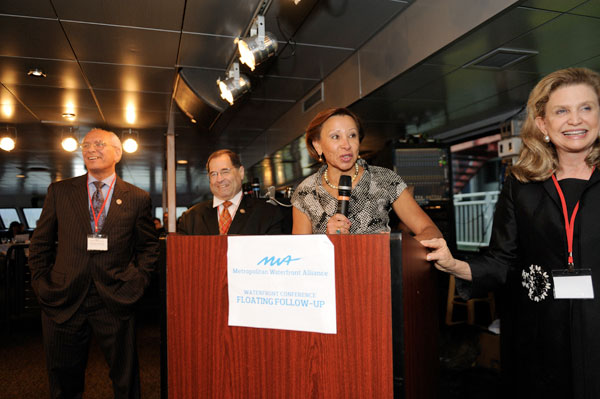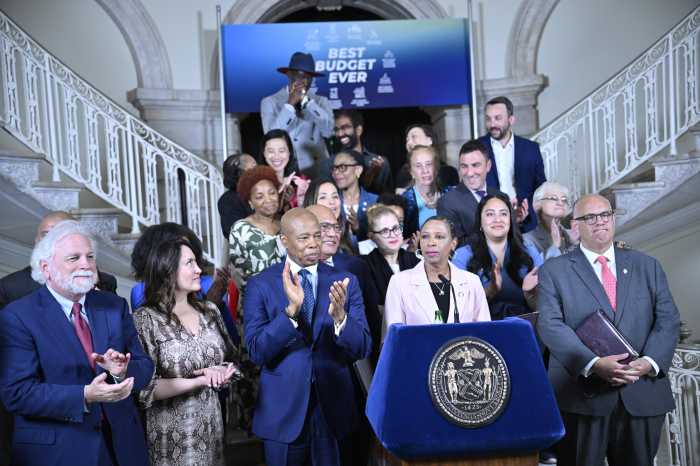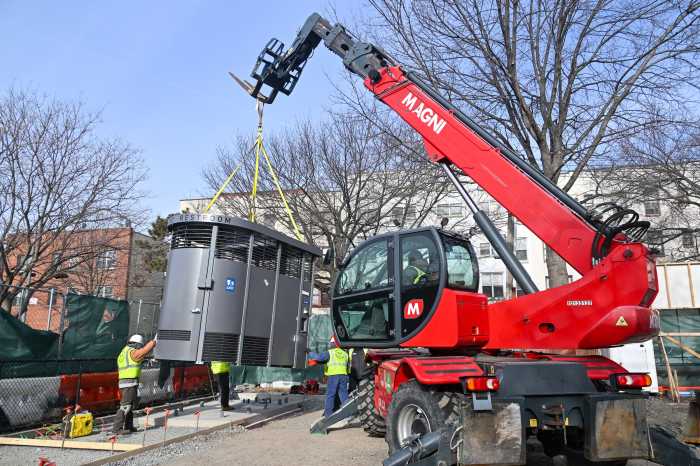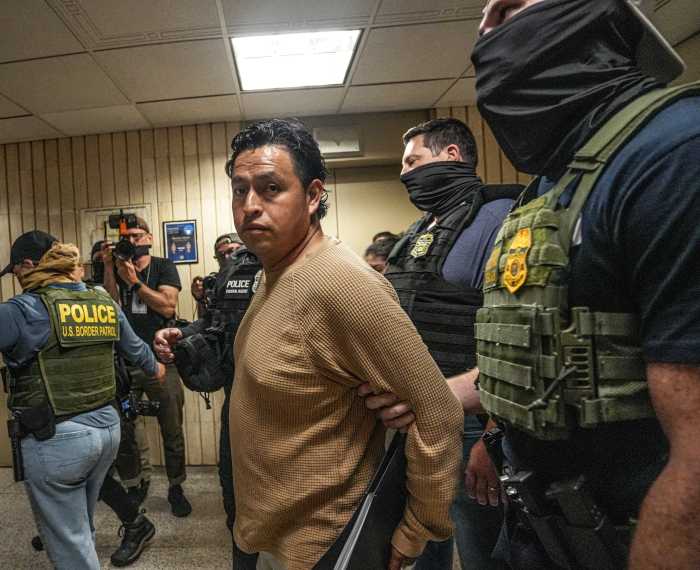By Terese Loeb Kreuzer | At the Metropolitan Waterfront Alliance’s conference on May 16, Christopher Ward, executive director of the Port Authority of New York and New Jersey, proved he has more on his plate than what’s going on at the World Trade Center site. He was the keynote speaker for an afternoon of panel discussions on waterfront topics. Roland Lewis, president and C.E.O. of the M.W.A., introduced the main themes, which included how to govern the waterfront, how to identify the resources and how to enable efficient, affordable harbor transportation.
The M.W.A. is a consortium of more than 500 organizations with ties to New York City’s regional waterways. The conference took place aboard “Spirit of New Jersey,” a spacious ship belonging to Entertainment Cruises. With ample food and limited opportunities to leave the ship, it provided an excellent setting in which to talk to anyone with an oar in what Congressman Jerrold Nadler called “the greatest natural harbor in the western hemisphere, perhaps in the world.”
More than 350 people attended the conference, including four members of the U.S. House of Representatives, highly placed officials in New York City government, administrators of organizations and businesses that use and depend on the waterfront, and office holders from other municipalities.
City Planning Commissioner Amanda Burden was there, holding aloft a copy of “Vision 2020: The New York City Waterfront Plan,” which her department spearheaded.“The City has committed over $3.3 billion over the next three years to implementing the Vision 2020 plan,” said Burden. “Money from the City will go toward strengthening the working waterfront, improving public access, cleaning the water and being able to navigate the waves of regulations involved in improving and building on the waterfront… The waterfront will become part of New Yorkers’ everyday lives.”
“This administration is committed to really restoring the waterways as an ecosystem, which I think is unparalleled in terms of investment,” said Ward.
These days, Ward thinks a lot about dredging. To the layman, this subject might not seem fascinating, but the implications for the waterfront food chain are far-reaching. Dredging is necessary to keep the harbor channels clear so large ships, bearing commodities (and creating jobs) can come and go freely. When mud and gunk are pulled out of the harbor, it has to be put somewhere. Ward wrestles with where.

“One thing that the U.S. Army Corps [of Engineers] and the Port Authority are working on is a cost-effective dredge material handling facility adjacent to the harbor so [as to minimize] the transportation costs [which are] really what [are] driving up dredging costs,” said Ward.
Another topic on Ward’s mind, these days, is ferries. New York City is built on an archipelago and the harbor stretches from Brooklyn and Queens to New Jersey — but aside from a few ferry routes, there are no easy waterborne ways to get from one part of the harbor to another. Because of rising costs, “We’re reaching a point where ferry travel is less and less cost effective,” said Ward. Plus, he said, “that ferry trip is really only half the journey” since it deposits passengers on the periphery of the islands. Ward said that planning for ways in which passengers can reach their final destinations must be part of the package.
“Ferry systems are fragile,” Ward said. “They are difficult to develop and maintaining them in a cost-effective way will be a major, major challenge.”
Looking at the port as a whole, Ward seems optimistic.
“[There is] some very good news. We had thought the recession was going to deal a major blow to the port and to maritime activity. It has done a major blow to the aviation industry,” said Ward. “The Port Authority has seen it affect the economy in terms of the unemployment that we see here but one bright light in all of this is that the maritime industry is coming charging back. Last March was one of the largest growth months in the port’s history and we see that as a strong sign for the port going forward. But like the dredging challenge, I think we’re writing a whole new chapter in how we understand ports and what ports are. Ports are critical drivers of regional economies and national prosperity but their future is found in their efficiency.”
Ward’s speech was followed by four panels. One dealt with waterfront and harbor governance, one, with regional ferry service, one with the New York/New Jersey estuary, which was recently designated one of America’s “great waters” and one with regional sediment and dredged materials management.






























